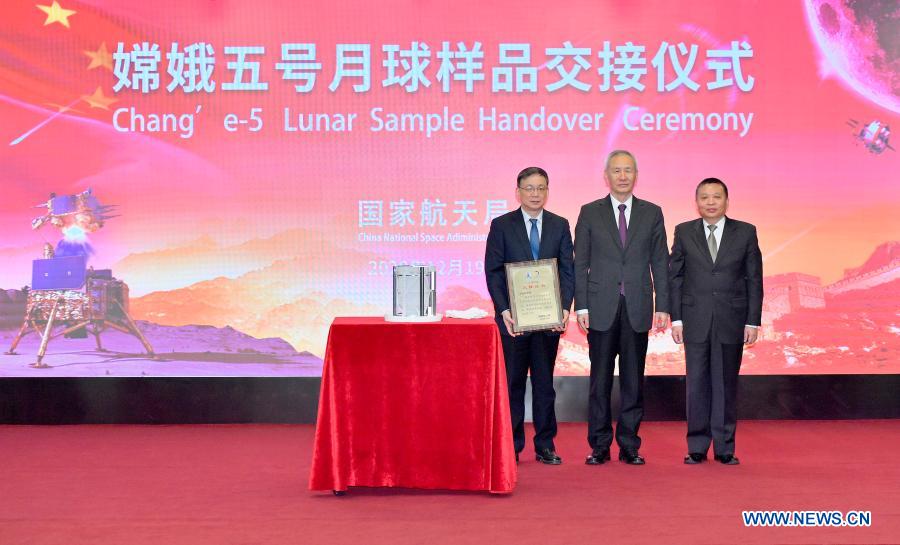
For SpaceUpClose.com & RocketSTEM
CAPE CANAVERAL, FL – China’s ambitious Chang’e-5 moon landing probe successfully brought back over 1.7 kilograms (3.8 pounds) of soil and rock samples gathered from the lunar surface, said the China National Space Administration (CNSA) which operated the groundbreaking mission.
“Chang’e-5 probe retrieved about 1,731 grams of samples from the moon, according to the China National Space Administration (CNSA).
These lunar samples represent the first ever for China and the first returned to Earth in over 4 decades following a safe soft landing of the return capsule in a remote, snow covered region of Inner Mongolia, in northern China on Wednesday, Dec 16 – demonstrating a spectacular advancement in Chinese scientific and technological space capabilities voyaging to the Moon and back that rival those of the United States.
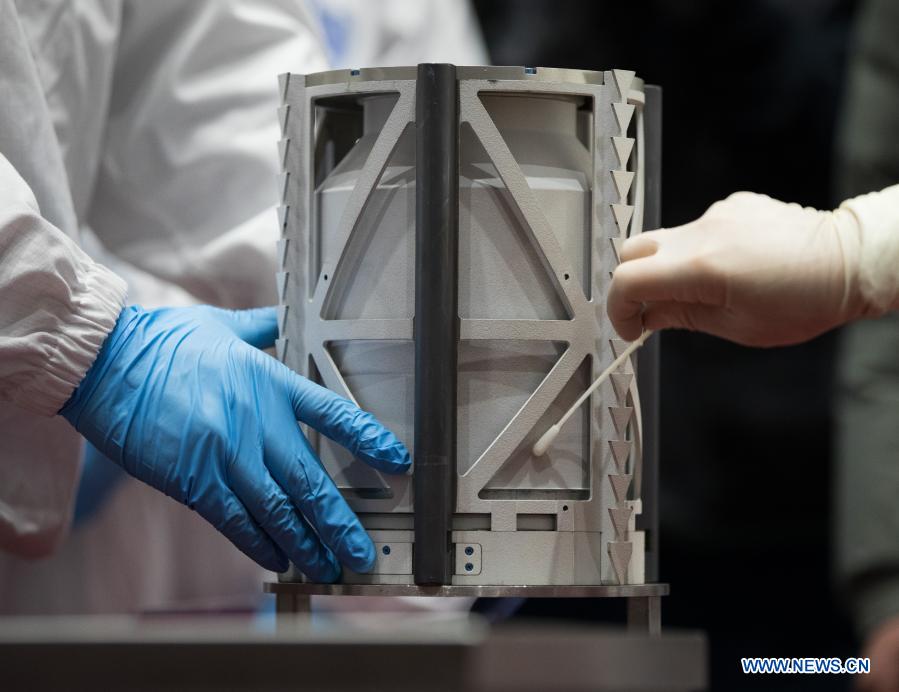
Recovery teams were quickly dispatched by helicopter and ground vehicles post touchdown, located the scorched capsule and planted a Chinese flag beside the lander to great fanfare and cheers.

The Chang’e-5 lunar samples have now been delivered to the Chinese Academy of Sciences (CAS) where they will be catalogued, categorized and eventually distributed to eager scientists inside China and eventually to international science teams as well.
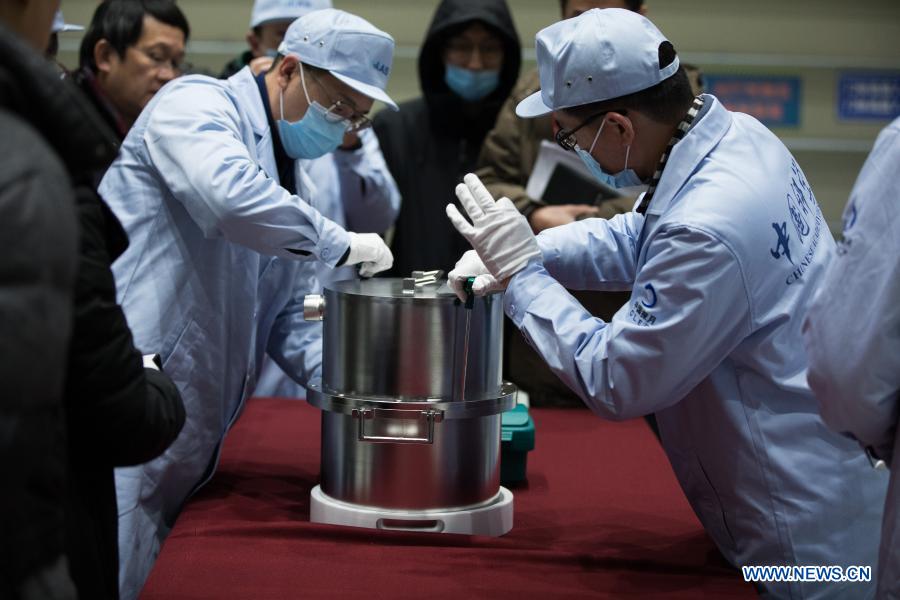
At a ceremony held in Beijing on Dec. 19, Zhang Kejian, head of the CNSA, handed over the samples to Hou Jianguo, president of the Chinese Academy of Sciences (CAS).
Chinese Vice Premier Liu He, also a member of the Political Bureau of the Communist Party of China Central Committee, attended the ceremony, said China’s official Xinhua News agency.
Vice Premier He “hailed the Chang’e-5 lunar mission as an important milestone in building China’s strength in aerospace.”
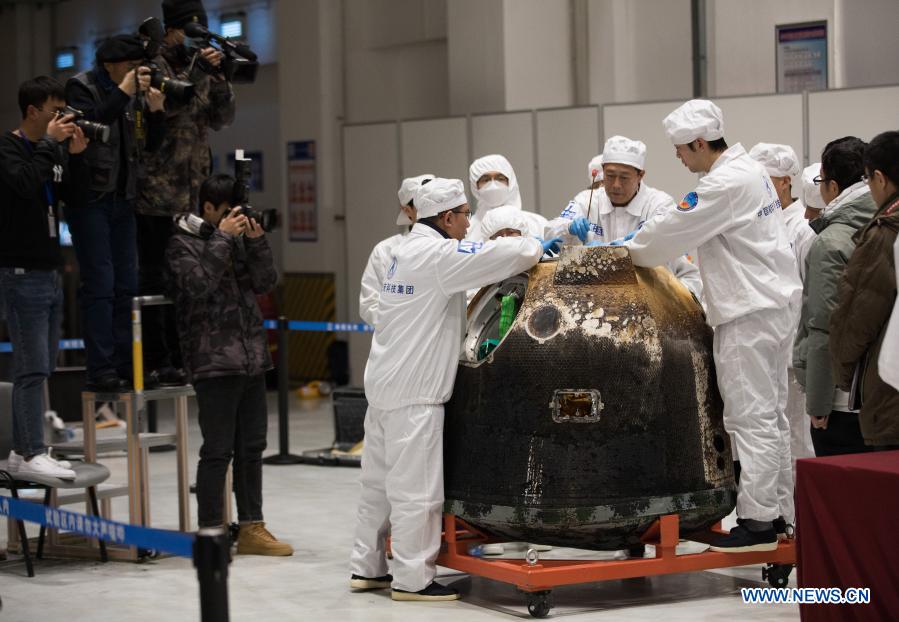
China hopes the Chang’e-5 samples will lead to “deepening the scientific understanding of the universe’s formation and evolution.”
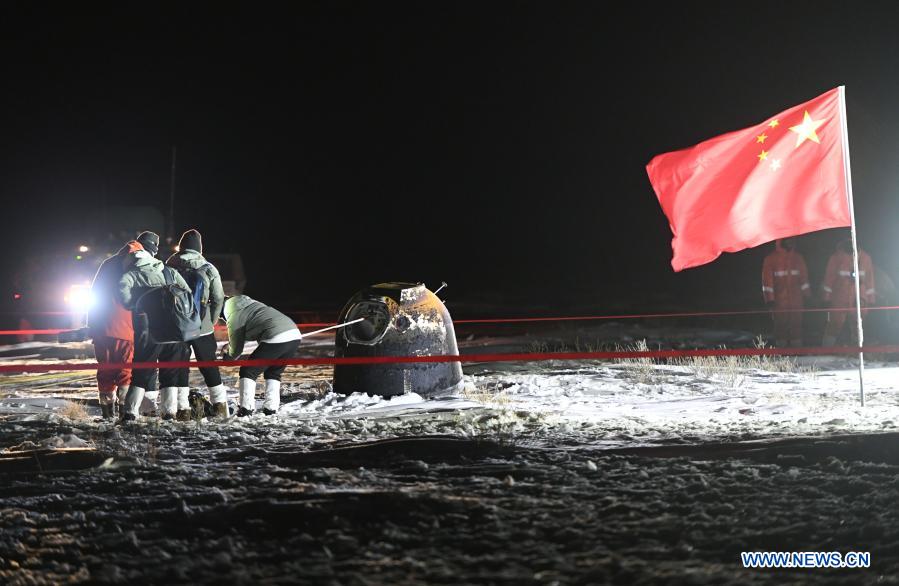
The next step was for the samples to be transferred to the lunar sample lab at the National Astronomical Observatories under the CAS where scientists “will carry out the storage, analysis, and research of the country’s first samples collected from the extraterrestrial object.”
“China will share samples with other countries and scientists around the world in accordance with the relevant international cooperation conventions, as well as multilateral and bilateral cooperation agreements,” said Wu Yanhua, deputy director of the Chinese space agency, said in a press conference Dec. 17
“We will soon release guidelines on the management of the lunar samples and data.”
Some samples will be put on public display at the National Museum of China in Beijing and also be given to the United Nations.
“China welcomes joint research and is willing to engage in friendly, sincere cooperation with the US depending on the policy of the US government,” CNSA officials said at the Dec. 17 briefing reported China Daily.
US law currently prevents virtually all direct interaction between NASA and Chinese space scientists.
The Chang’e-5 lunar samples are the first to be retrieved and returned to Earth since the Apollo and Luna missions from the US and Russia.
China thus ranks as only the 3rd nation on Earth to gather and return samples from the Moon’s surface – following the United States and the then Soviet Union – now Russia, from Apollo manned and Luna unmanned missions in the 1960s and 1970s.
Chinese scientists had hoped to collect up to 2 kg (4.4 pounds) of pristine lunar surface samples of pebbles and regolith to a depth of up to 2 meters with a drill and scoops aboard the Chang’e-5 lunar lander.
“Researchers have set up special storage facilities, constructed laboratories for sample processing and analysis, and developed detailed operating procedures to ensure that lunar samples are not contaminated as far as possible and that the research results are reliable, Zinhua further reported on Dec. 29.
“The samples will be first analyzed non-destructively,” said Xiao Long, a researcher at the China University of Geosciences. He told the Science and Technology Daily that this analysis could indicate the condition of the samples.
“A method for non-destructive analysis is to obtain the samples’ element composition and content information. Researchers do this by analyzing the wavelength and intensity of the characteristic fluorescence X-rays generated by different sample elements,” said Zhao Yuyan with Jilin University.
The Chang’e-5 mission began on Nov. 23 when the Long March 5 rocket successfully hurled the 8200 kg Change’5 moon mission on a fast paced 23 day long mission on China’s first ever mission to snatch lunar regolith from the Moon’s surface and send it back to eagerly awaiting scientists back on Earth landing in Inner Mongolia, China.
The Long March 5 carrier rocket lifted off at 3:30 p.m. EST (2030 GMT) Monday, Nov 23 (4:30 a.m. Nov. 24 Beijing Time) from the Wenchang Space Launch Center on Hainan Island, China on behalf of the Chinese National Space Administration (CNSA).
It achieved orbit around the Moon, Saturday, Nov. 28.
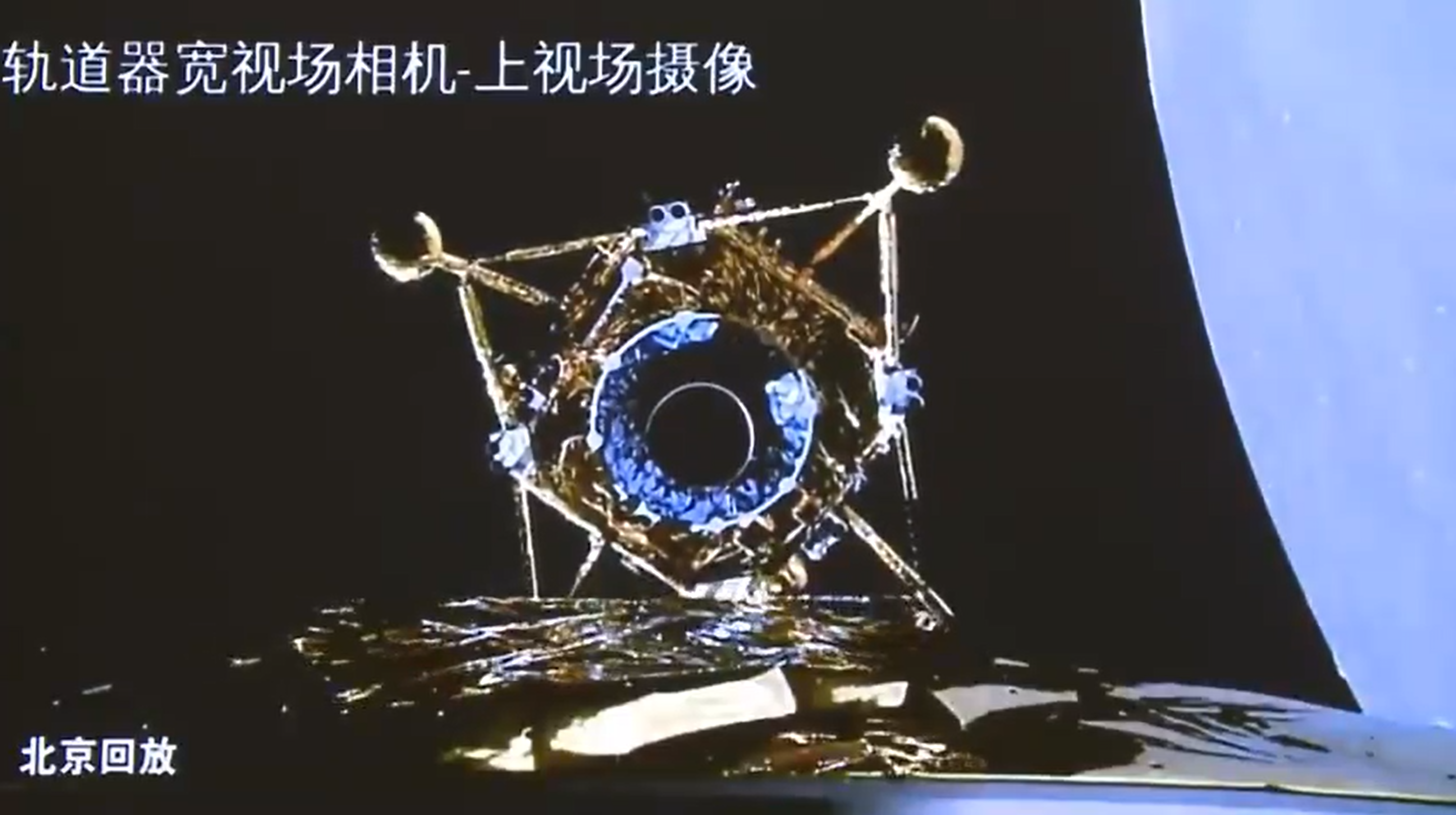
The precision guided rocket assisted lunar touchdown of the Chang’e-5 lander-ascender spacecraft combination occurred as planned at 10:11 a.m. EST (1511 GMT) 11:11 p.m . Beijing time Tuesday, Dec. 1, on the Mons Rümker region of Oceanus Procellarum or the Ocean of Storms, on a smooth volcanic plane, according to CNSA.
During the landing process, the cameras aboard the lander took images of the landing area.
Several hours post touchdown the lander transmitted a beautiful panoramic image from the lunar landing site on the surface from the Mons Rümker region of Oceanus Procellarum or the Ocean of Storms.
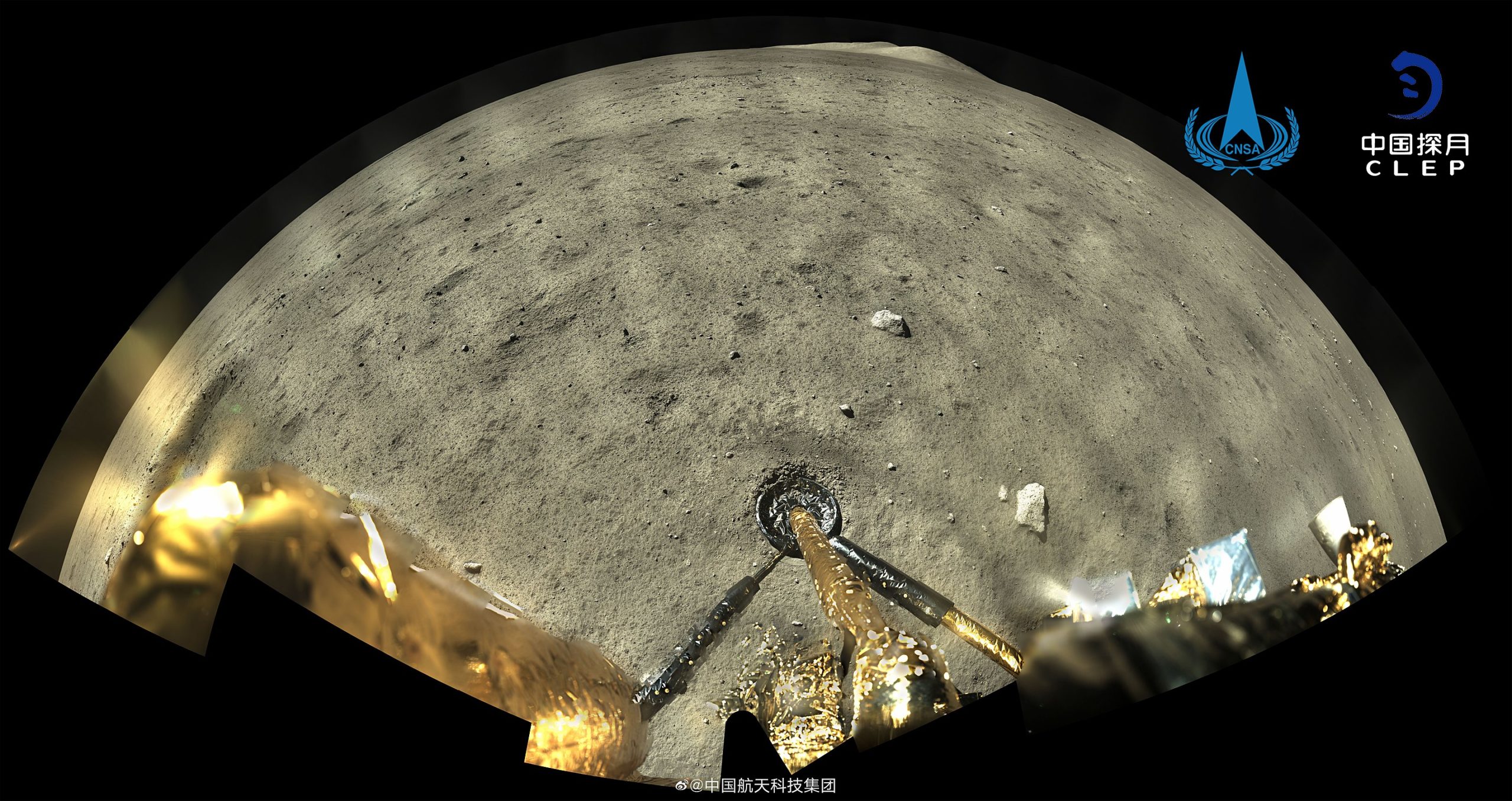
Using an onboard drill, scoop and robotic arm the solar powered robotic explorer ascender-lander component of Change’5 set to work over two days on the most challenging aspect of the mission – to collect around 2 kilograms or more of lunar dust soil and rock regolith at the landing site in a region to the north of Mons Rümker, a mountain overlooking a vast lunar mare called Oceanus Procellarum, or the Ocean of Storms, on a smooth volcanic plane on the western edge of the moon’s near side.
The goal was to return the cache of precious samples from a depth of up to 2 meters to eagerly awaiting researchers on Earth for detailed scientific analysis.
Photos released by CNSA showed the lunar surface had been dig into by the landers scoop and drill.
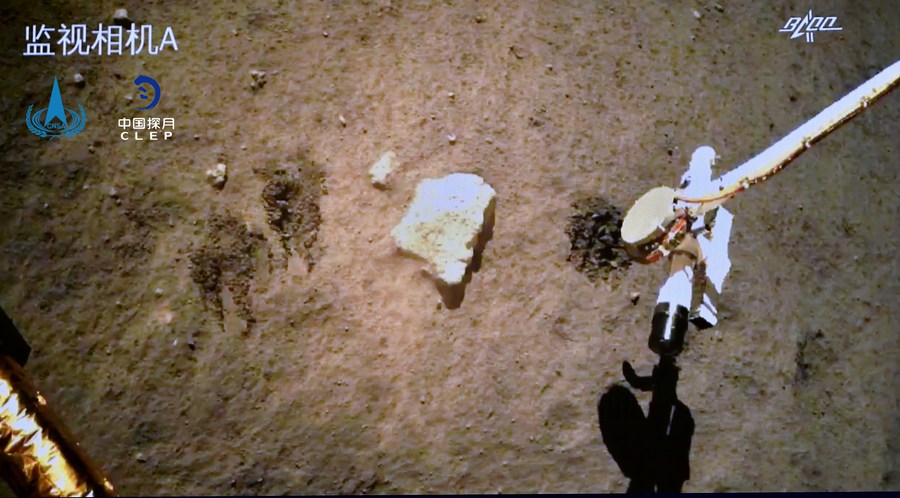
“It adopted two methods of moon sampling, including using drills to collect subsurface samples and grabbing samples on the surface with a robotic arm. It gathered diverse samples at different sites,” said CNSA.
China's Chang'e-5 probe completes sampling on the moon. It has adopted two methods, including using drills to collect subsurface samples and grabbing samples on the surface with a robotic arm. Diverse samples have been gathered. #LunarProbe #ChangE5 https://t.co/9LxFporp3e pic.twitter.com/N4snzNs77Q
— China Xinhua News (@XHNews) December 3, 2020
After two days work on the lunar surface the ascender of Chang’e-5 took off from the lunar surface and entered the preset lunar orbit on Dec.3. The ascender of Chang’e-5 probe successfully rendezvoused and docked with the orbiter-returner combination in lunar orbit, and transferred the samples to the returner on Dec. 6.
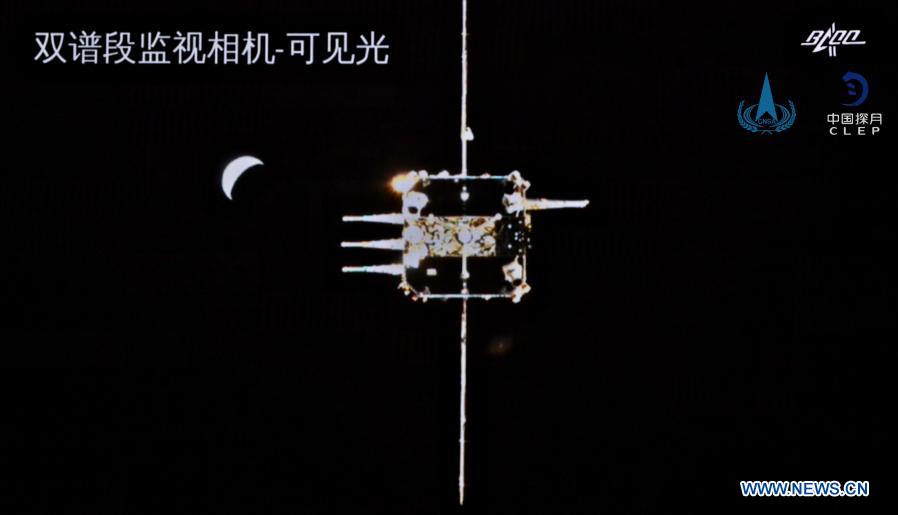
After conducting two orbital maneuvers the orbiter-returner entered the moon-Earth transfer orbit on Dec. 13. It completed two orbital correction en route to Earth.
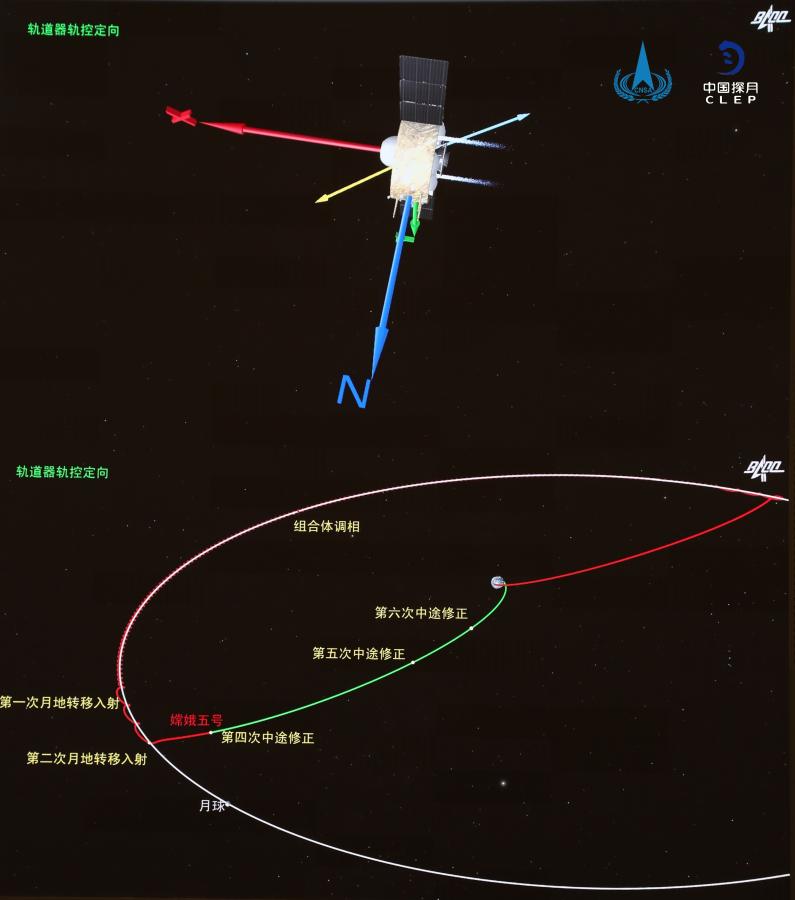
The Chang’e-5 mission is comprised of four components: an orbiter, a lander, an ascender, and an Earth return capsule.
The samples collected could be the youngest samples retrieved from the Moon so far dating to roughly 1 billion years vs 3.1 to 4.4 billion years old for the Apollo samples.
The most recent lunar sample return mission was accomplished by the Luna 24 spacecraft launched by the then Soviet Union in 1976.
To date lunar soil and rock samples were collected and returned from 6 NASA Apollo manned moon landings and 3 Russian Luna robotic missions.
Chang’e-5 is equipped with a robotic arm with a sampling scoop, a coring drill, and a sample chamber that can return up to 4 kg of regolith. It also has a Panoramic Camera (PCAM), Lunar Regolith Penetrating Radar (LRPR), and a visible and near-infrared Lunar Mineralogical Spectrometer (LMS).
Chang’e-5 marks the next bold step in China three step lunar ambitions following on the Chang’e-1 and 2 lunar orbiters and Chang’e-3 and 4 landers and Yutu rovers on both the near and far side.
Watch the Dec. 19 Chang’e-5 CNSA News briefing here:
Video Caption: LIVE: Press briefing on China’s Chang’e-5 lunar mission on Dec. 19, 2020. China’s Chang’e-5 lunar probe has brought moon samples back to Earth. The State Council Information Office holds a press briefing on the moon mission
China became the first nation in history to land a robotic spacecraft on the far side of Earth’s Moon, when their robotic spacecraft named Chang’e 4 accomplished a soft touchdown Jan. 3, 2019 with the Yutu-2 moon rover.
The mosaic below by Ken Kremer and Marco Di Lorenzo shows the Yutu-1 moon rover at work on the lunar surface.

Earlier this year China has successfully launched its first fully indigenous mission to Mars – the extremely ambitious Tianwen-1 robotic mission designed to orbit, land and rove on the Red Planet – aimed at comprehensively investigating its climate, atmosphere and geology and search for signatures of water as well as snapping numerous images.
China utilized its most powerful rocket – the relatively new heavy-lift Long March 5 – to hurl the combination Tianwen-1 orbiter and lander mission to Mars.
The Chinese Tianwen-1 spacecraft lifted off atop the Long March 5 carrier rocket from the seaside Wenchang Space Launch Center in southern China’s Hainan province on July 23, at 12:41 a.m. EDT (0441 GMT; 12:41 p.m. Beijing time).
China eventually hopes to land the first Chinese people on the Moon at some point during the 2020s.
NASA seeks to return astronauts to the lunar surface under Project Artemis aiming to land the first woman and next man at the Moon’s South Pole by 2024
Watch Ken’s live interview on BBC World TV News on Dec. 16 about China’s successful Change’5 mission to collect lunar surface sample and soil and rock and return them to Earth safely with touchdown in inner Mongolia.
Watch Ken’s continuing reports about NASA missions and Project Artemis, National Security missions, SpaceX Crew Dragon, Starlink, Commercial Crew and Artemis and onsite for live reporting of upcoming and recent SpaceX and ULA launches including Demo-2, Starlink, X-37B, Solar Orbiter, Mars 2020 and more at the Kennedy Space Center and Cape Canaveral Space Force Station.
Stay tuned here for Ken’s continuing Earth and Planetary science and human spaceflight news: www.kenkremer.com –www.spaceupclose.com – twitter @ken_kremer – email: ken at kenkremer.com
Dr. Kremer is a research scientist and journalist based in the KSC area, active in outreach and interviewed regularly on TV and radio about space topics.
………….
Ken’s photos are for sale and he is available for lectures and outreach events
Please consider supporting Ken’s work by donating at Patreon:
https://www.patreon.com/kenkremer




